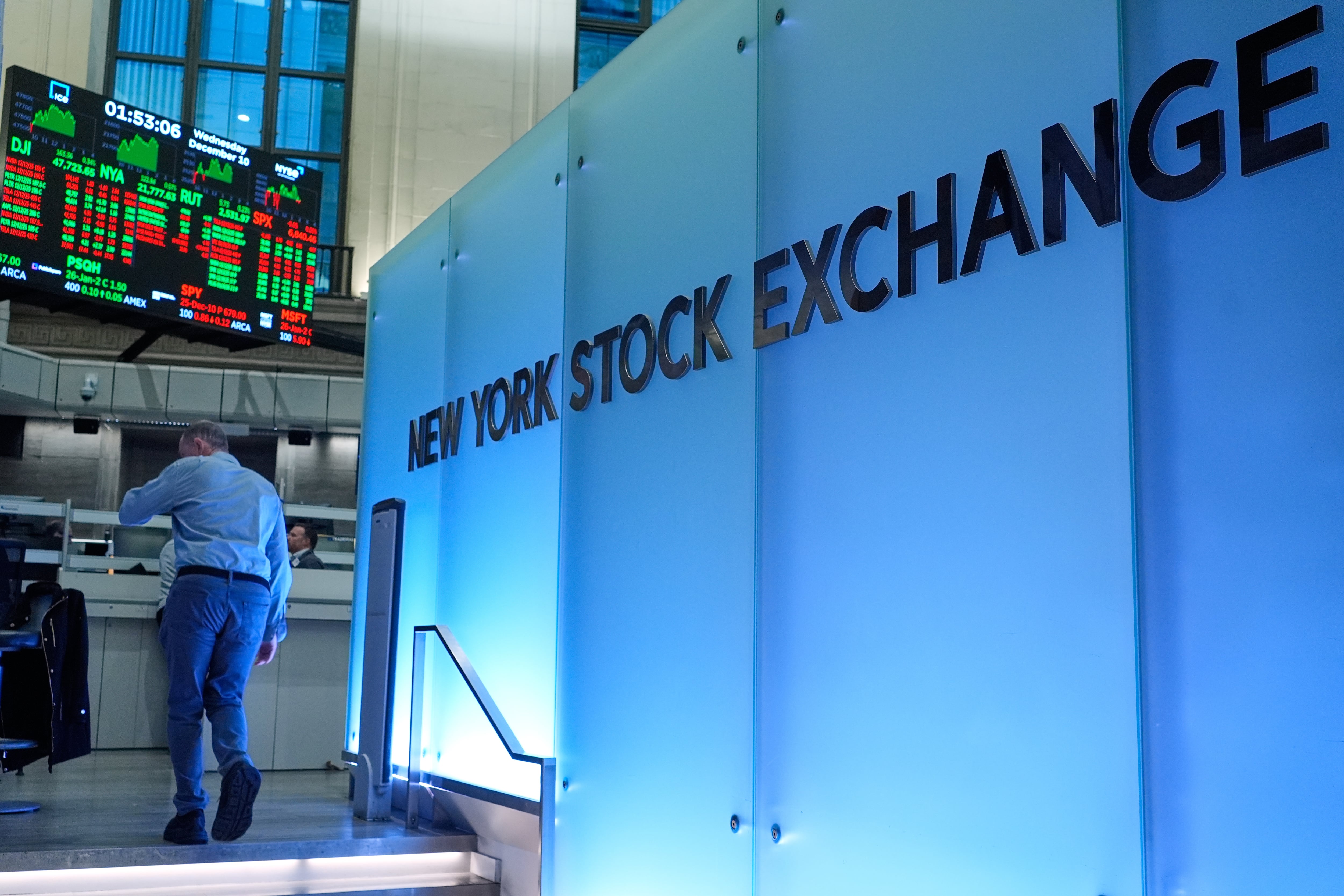NEW YORK (AP) — For more than a year, the U.S. stock market went in mostly one direction, up, and in mostly one manner, quietly. A bonanza around artificial-intelligence technology helped drive Big Tech stocks higher, while other areas of the market held up amid rising hopes for coming cuts to interest rates by the Federal Reserve.
Last month the S&P 500 suffered its worst one-day loss since 2022. A measure of fear among investors in U.S. stocks also hit 19.4, its highest level since a blip above 21 in April, the last time waves caused a ripple in the placid market’s surface. It averaged 15.9 from the start of 2023 until July.
Some of the turbulence came on fears that profit reports for Big Tech stocks won’t be able to clear the immensely high expectations set for them after their prices surged so high.
It also was a result of a stock market finally shifting to a “show me” phase, now that cuts to interest rates seem imminent, according to Lisa Shalett, chief investment officer at Morgan Stanley Wealth Management.
Instead of rising simply on hopes that the Fed will cut its main interest rate from the highest level in two decades, stocks will now move based in part on the pace and size of those potential cuts. The nearly unanimous expectation among traders is that the Fed will begin cutting in September.
If the Fed’s rate-cutting campaign proves slower or less deep than traders expect, investors could be disappointed. The risk for that is high, given forecasts by many traders that the Fed will cut its main interest rate by 1.50 percentage points over the next year. That’s much faster than the quarterly cuts to rates that Goldman Sachs economist David Mericle was predicting recently, for example.
The Fed has been holding its federal funds rate at a range of 5.25% to 5.50% for roughly a year.
Inflation could prove more resistant to dropping back to the Federal Reserve’s 2% target than many investors expect, which could force the Fed to cut rates more slowly. Only a few months ago several discouraging reports on inflation raised doubts about whether any cuts to rates would arrive in 2024.
Central banks around the world are also making moves, such as the Bank of Japan's upward bias on rates while other central banks going the opposite way. That’s not to mention possible swings for the market that could arise because of the upcoming U.S. election.
“Bouts of volatility like we’ve seen are a defining feature of the new macro and market regime, we think,” say Jean Boivin and other strategists at BlackRock Investment Institute.
The U.S. stock market is drifting lower following mixed data on the economy’s strength. The S&P 500 fell 0.4% Tuesday and remains a bit below its all-time high set last week. The Dow Jones Industrial Average dropped 271 points, and the Nasdaq composite was mostly unchanged. Treasury yields eased a bit after the reports on the U.S. job market, retail sales and business activity did little to clear uncertainty about where the Federal Reserve may take interest rates next year. AI stocks, which have been under heavy pressure recently, were mixed. Stock indexes fell across much of Europe and Asia.
Many U.S. consumers say they’ve noticed higher than usual prices for holiday gifts in recent months, according to a a December poll from The Associated Press-NORC Center for Public Affairs Research. A contributing factor is the unusually high import taxes the Trump administration put on foreign goods. While the worst-case consumer impact that many economists foresaw from the administration’s trade policies hasn’t materialized, some popular gift items have been affected more than others. Most toys and electronics sold in the U.S. come from China. So do most holiday decorations. Jewelry prices have risen due to the cost of gold.
A sell-off for Oracle is weighing on Wall Street as investors question whether its big spending on artificial-intelligence technology will pay off. The S&P 500 was mostly unchanged Thursday and hovering around its all-time high set in October. Drops for AI-related stocks dragged the Nasdaq composite down 0.6%. Oracle at one point was heading toward its worst loss since 2001 on worries about how much it plans to spend on AI infrastructure. But most stocks on Wall Street rose, and the Dow Jones Industrial Average jumped 600 points. Treasury yields slipped after a report showed more U.S. workers applied for unemployment benefits.
The U.S. stock market is flirting with its all-time high after the Federal Reserve cut its main interest rate to bolster the job market. The S&P 500 rose 0.8% Wednesday and was on track to squeak past its all-time closing high, which was set in October. The Dow Jones Industrial Average climbed 559 points, and the Nasdaq composite rose 0.4%. Wall Street loves lower interest rates because they can boost the economy and goose prices for investments, even if they have the potential of making inflation worse. Treasury yields eased in the bond market.
The U.S. stock market is drifting near its record levels following reactions to profit reports from Macy’s, Marvell Technologies and other companies. The S&P 500 added 0.4% Wednesday and climbed within 0.5% of its all-time high set in late October. The Dow Jones Industrial Average added 428 points, and the Nasdaq composite rose 0.2%. Treasury yields eased in the bond market following some mixed reports on the U.S. economy. One suggested hiring was much weaker in November than economists expected, while a second said growth for U.S. services businesses was better than expected.
The Enhanced Games is going public in two ways — with a new listing on the Nadsaq stock exchange and also by offering a direct-to-consumer business focused on performance products.









